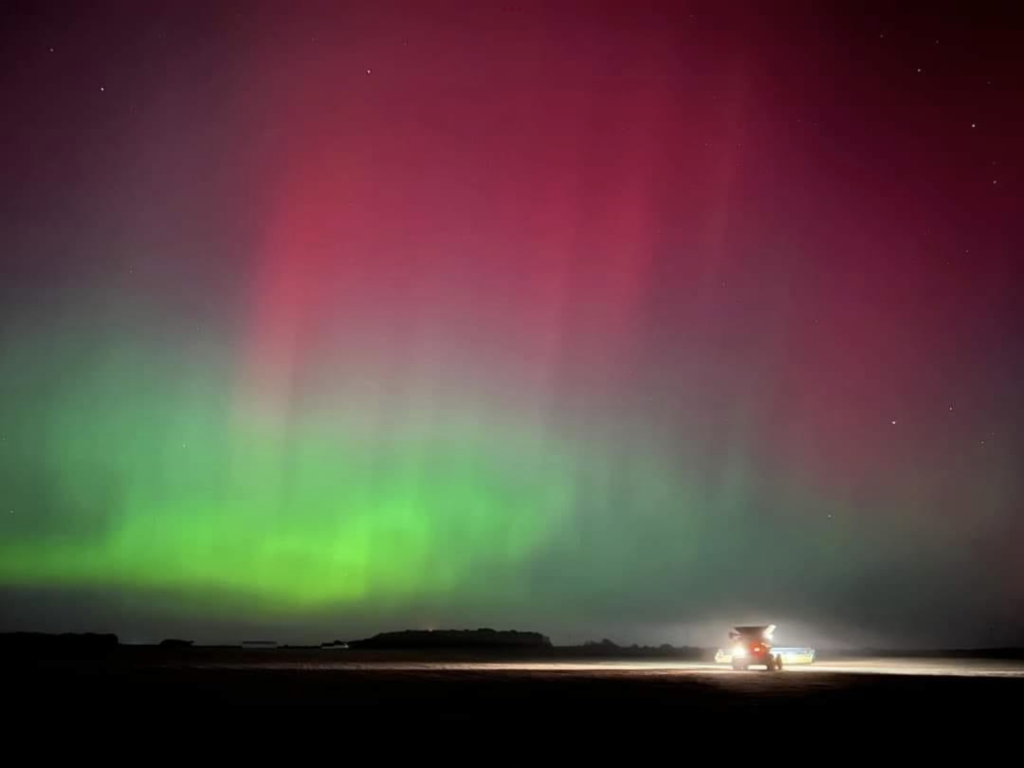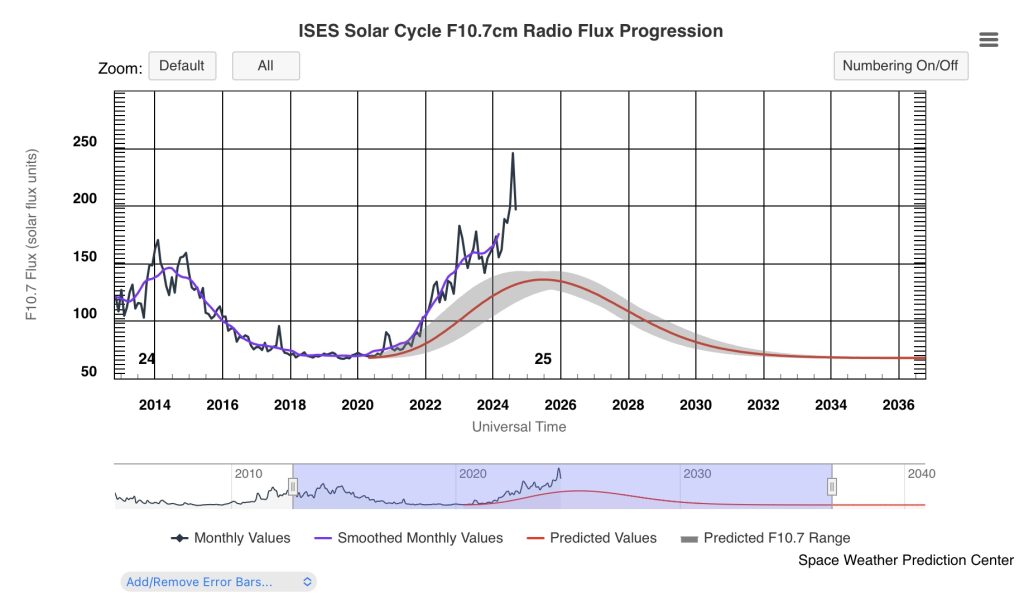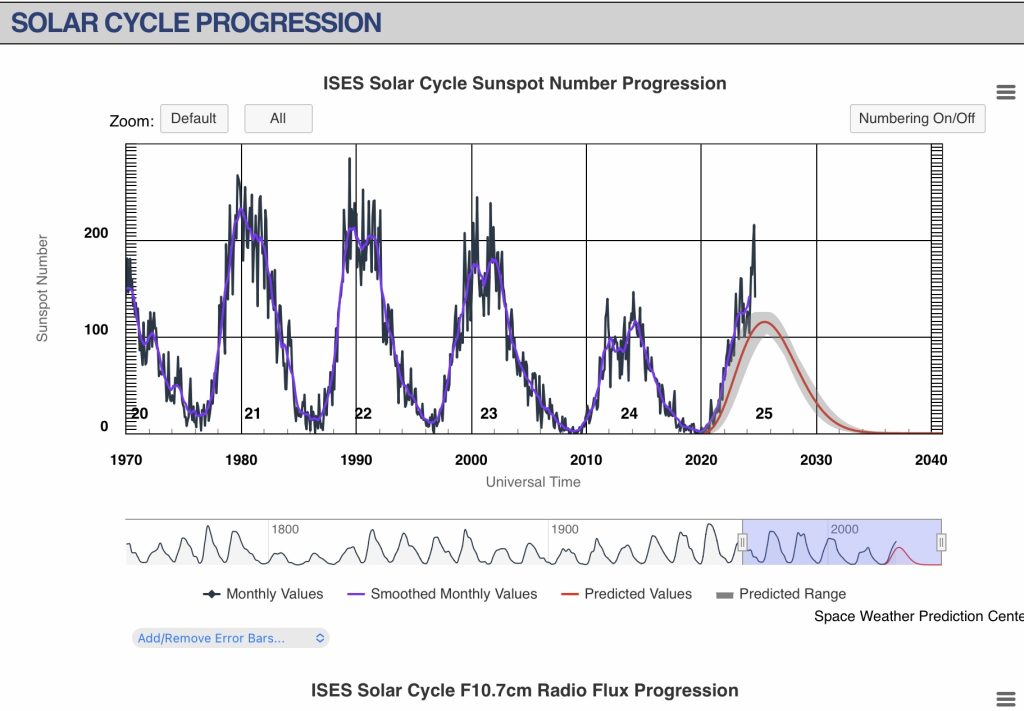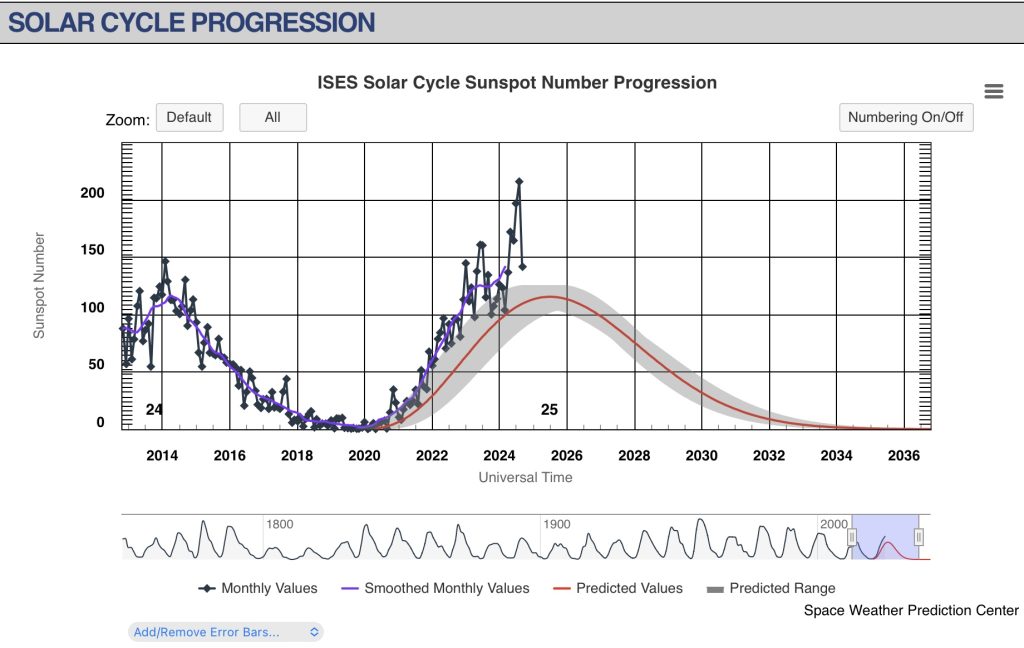By Russ Kaspar/Prairie Grass Observatory Director at Camp Cullom
What is with all this activity lately with the beautiful display of reds, greens, blues and purples in the northern Indiana sky?
Every 11 years our sun goes through a fairly predictable “sunspot cycle.” Sunspots are caused by explosions of energy on the sun caused by a re-organizing of the magnetic field lines near sunspots. This tangling and re-organizing of these solar magnetic field lines have been described as rubber bands that twist up and eventually have to unravel. When that occurs, tremendous amounts of energy from the sun are released. Some of this energy creates charged particles that make their way to earth.

——————————-
Since these particles are “charged”, they are attracted to the north polar region. As these energetic “charged” particles make their way into the upper atmosphere, these particles encounter Nitrogen and Oxygen, by far the most abundant gases in our atmosphere.
When these charged particles from the sun encounter a Nitrogen atom, it energizes electrons in the Nitrogen atom and then when this energy is released…WOW…we see BLUE or PURPLE.
When the same charged particles from the sun encounter an Oxygen atom, it energizes electrons in the Oxygen atom and then when this energy is released…WOW…we see GREEN and RED.
All this happens at high altitudes in our atmosphere, often between 62 and 93 miles above the surface of the earth.
So why are we seeing so many nights with the gorgeous display of colors from the “Aurora Borealis” or “Northern Lights?” Because the sun is particularly active now and we are at or near the top of the 11 year solar sunspot cycle. As all this energy is spewing out from the sun as charged particles, it energizes our Nitrogen and Oxygen in our atmosphere and gives us a wonderful display of color.

Camp Cullom and Prairie Grass Observatory host its annual Chili Supper with a FREE WILL OFFERING for the dinner in the lodge Saturday October 12 from 4:30 PM to 7 PM. Camp Cullom’s Prairie Grass Observatory will be open at dusk after the Chili Supper, weather permitting. Camp Cullom is located at 6815 W. County Rd 200 N, Frankfort, Indiana 46041. Prairie Grass Observatory at Camp Cullom is home to the largest annual gathering of Astronomers in the State during the Indiana Family Star Party and home of several telescopes, including the 28” computerized slew-able Dobsonian scope that is one of the largest in the state.
Graphs below from the NOAA.gov site show how near we currently are to the top of the 11 year sunspot cycle. Several observers are at Camp Cullom’s Prairie Grass Observatory to image the Northern Lights and other fall celestial objects during the abundant clear skies we are experiencing in Indiana this week.
Camp Cullom and the Observatory is owned by the Children of Clinton County, is a United Way for Clinton County entity.



